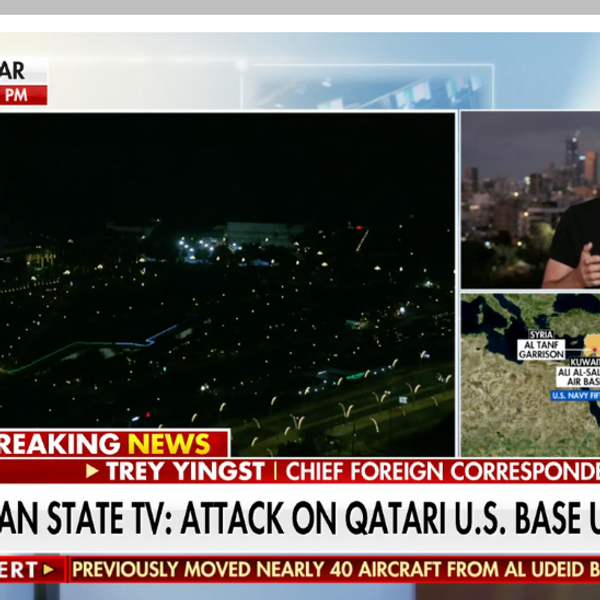Discussions of Pentagon spending in Washington routinely ignore the fact that at $886 billion for next year, the military budget is already at one of the highest levels since World War II. With better management and a more realistic strategy, that sum would be far more than is needed to provide an effective defense of the United States and its allies.
Unfortunately, the Pentagon, the arms industry, and their allies in Congress have failed to make a careful assessment of America’s defense needs. Instead, they’re pushing an ill-considered plan to supersize the weapons production base at the expense of other urgent national needs.
The main argument used by Pentagon budget boosters is that the United States is in danger of falling behind China in developing and deploying next-generation systems, like unpiloted vehicles controlled by artificial intelligence. This approach would also include taxpayer subsidies for the building of new weapons factories, which could lead to a permanent expansion of the arms sector. Doing all of this could push the Pentagon budget well over $1 trillion in the next few years, a huge and unnecessary spending binge that would further militarize our economy at the expense of investments in addressing major challenges like climate change and outbreaks of disease.
Deputy Secretary of Defense Kathleen Hicks unveiled the Pentagon’s new approach in a speech to the National Defense Industrial Association in August of this year:
“To stay ahead [of China], we’re going to create a new state of the art… leveraging attritable, autonomous systems in all domains which are less expensive, put fewer people at risk, and can be changed, upgraded, or improved with substantially shorter lead times," she said. "We’ll counter the PLA’s [People’s Liberation Army’s] with mass of our own, but ours will be harder to plan for, harder to hit, and harder to beat.”
Building new systems, based on complex new technologies, able to be produced in large numbers in short order would be a daunting task. It would run counter to the record of the Pentagon and the arms industry over the past five decades, which is rife with examples of cost overruns and schedule delays. The Pentagon’s dream of new high-tech systems that are affordable and quick to produce is unlikely to be fulfilled.
A forthcoming reportfrom the Pentagon on the nation’s “defense industrial strategy” suggests that the solution is to fund smaller, more nimble arms firms, because “the traditional defense contractors in the [defense industrial base] would be challenged to respond to modern conflict at the velocity, scale, and flexibility necessary to meet the dynamic requirements of a major modern conflict.”
Regardless of who takes up the challenge of building next generation systems, the notion that new technology can solve the array of security challenges facing America is a dubious proposition. Every generation brings hopes of a new, miracle technological fix that will allegedly dramatically increase U.S. military capabilities. From the “electronic battlefield” in Vietnam to the “revolution in military affairs” that was touted in the 1990s, this approach has produced some systems that are more accurate and better networked.
But the existence of this technology has not enabled the United States to actually win wars — in Vietnam, Iraq, or Afghanistan. That’s because technology cannot overcome a determined adversary engaged in irregular warfare on its home turf, and that the goal of reshaping entire societies by force was wildly unrealistic in the first place. The idea that emerging technologies will do any better and increase the ability to “win” a war with China is misguided at best. War with China would be an unprecedented disaster for all concerned, and the goal of U.S. policy should be to prevent such a conflict, not spin out scenarios for “winning” a war against a nuclear-armed power.
In addition, contrary to the claims of the Pentagon and the arms industry, China’s military is not 10 feet tall, nor is its arms industry. As I note in a new paper for the Brown University Costs of War project, however one chooses to measure it, the U.S. spends two to three times what China spends on its military. The U.S. also has large advantages in numbers of basic systems, including nuclear weapons, aircraft carriers, advanced combat aircraft, nuclear-powered submarines, and transport aircraft.
In fact, as Dan Grazier of the Project on Government Oversight has noted, China’s military strategy is “inherently defensive.” When it comes to emerging military technology, the relative strengths of the U.S. and China are harder to assess given a lack of transparency on research into these areas. But the best course is not to run an arms race with China in the development of AI-driven robotic weapons. As Michael Klare has noted in a report for the Arms Control Association, there are real concerns that “AI-enabled systems may fail in unpredictable ways, causing unintended human slaughter or uncontrolled escalation.”
The best hope of fending off a war between the U.S. and China over Taiwan rests with smart diplomacy, not “smart” weaponry. A good start would be to revive the “One China” policy, which calls, among other things, for China to commit itself to a peaceful resolution of the question of Taiwan’s status, and for the U.S. to forswear support for Taiwan’s formal independence and maintain only informal relations with the Taiwanese government.That approach has kept the peace in the Taiwan Strait for five decades.
There is no good reason to expand the U.S. arms production base to accelerate the development of dangerous, next generation weapons systems. But unless Congress and the public act soon to rein in these efforts, we may soon enter a brave new world that will make the current security landscape look benign by comparison.
- Stop using the China 'threat' to throw more money at the Pentagon ›
- What challenge does Chinese military spending really pose? ›
- The overreaction to China's new nuclear silos ›
- How the US and China can stop their brewing arms race ›
- The world weeps while the military industrial complex keeps winning | Responsible Statecraft ›
- Has Biden's China chip war backfired? | Responsible Statecraft ›
- Forget regs, AI CEOs got a need for speed to 'beat China' | Responsible Statecraft ›














